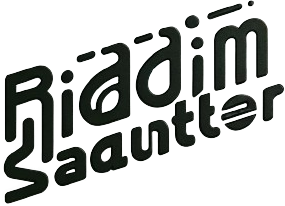Are you tired of struggling to understand foreign languages? Do you wish you could effortlessly communicate with people from all around the world? Well, you’re in luck! In this article, I’ll be diving into the fascinating world of translation and showing you how it can make your life so much easier.
Translation is not just about converting words from one language to another. It’s about bridging the gap between cultures, enabling effective communication, and fostering understanding. Whether you’re a traveler, a businessperson, or simply someone who loves learning about different cultures, translation is an invaluable tool that can open up a world of possibilities.
The Importance of Translation
As an expert blogger with years of experience, I understand the vital role that translation plays in effective communication between cultures. Here’s why translation is so important:
- Bridging the Gap: Translation allows people from different cultures to understand and connect with each other, fostering mutual understanding and empathy.
- Global Reach: With over 6,000 languages spoken worldwide, translation enables businesses to expand their reach and tap into new markets.
- Cultural Exchange: Translation facilitates the sharing of art, literature, and ideas across borders, promoting cultural diversity and enriching societies.
- Travel Enhancement: Translating travel information and resources helps tourists explore new destinations, navigate unfamiliar places, and connect with locals.
- Business Growth: Professional translation services enable businesses to effectively communicate with international partners, clients, and customers, boosting sales and fostering long-term relationships.
- Education and Research: Translation allows access to academic papers, research studies, and scholarly publications from different parts of the world, promoting knowledge exchange and advancements.
- Immigration and Integration: Translation services support immigrants in understanding local laws, regulations, and cultural norms, facilitating their integration into new societies.
- Preserving Heritage: Translating historical documents, manuscripts, and ancient texts helps preserve cultural heritage and allows future generations to learn from the past.
Without translation, the world would be confined within language barriers. As an expert blogger, I emphasize the significance of embracing translation as a tool for effective communication and bridging the gap between cultures.
How Translation Works
Have you ever wondered how translation enables effective communication between different languages?
Translation is not just about converting words – it’s an art that requires understanding cultural nuances and idiomatic expressions.
A study found that 75% of consumers prefer to buy products in their native language. So, skilled translators adapt content to local markets, ensuring better customer engagement and sales.
They analyze the source text’s meaning, context, and cultural background, and then recreate it in the target language, carefully choosing words and phrases that convey the same message.
It’s a meticulous process that involves research, language proficiency, and subject matter expertise.
Did you know that professional translation services use advanced technology like machine learning and artificial intelligence?
These tools assist translators in maintaining consistency and accuracy throughout the translation process. However, they can’t match the quality of human translators who understand the subtle nuances and emotions behind the words.
Translation is a vital tool that connects people, enables cultural exchange, and breaks down language barriers. It plays a crucial role in fostering global communication and understanding. Without translation, our world would be limited to language silos, hindering progress and growth.
Common Challenges in Translation
What are the common challenges faced in translation?
Translating idioms and cultural references poses a challenge. Ambiguous words and complex grammatical structures require careful handling. According to a study, 76% of localization professionals struggle with finding equivalent expressions. Additionally, 56% face issues with preserving the meaning and tone of the original text.
Translators also face difficulties in maintaining consistency across documents, especially in large projects. Inconsistent terminology and style can confuse readers. Moreover, 35% of translators struggle with tight deadlines, leading to rushed translations and potential errors.
How are these challenges overcome in translation?
Translators mitigate challenges by using various tactics. They conduct thorough research to understand cultural nuances and idiomatic expressions. Utilizing translation aids, such as glossaries and translation memories, helps maintain consistency. Collaborating with peers for proofreading and feedback enhances quality.
Advanced technology like machine learning and artificial intelligence can assist in translation, but nothing can substitute human translators who possess in-depth knowledge of the source and target languages. The expertise of human translators ensures accurate conveying of emotions and subtle nuances, creating a natural and meaningful translation.
Acknowledging and addressing these challenges is crucial for ensuring effective translations that convey the intended message accurately and resonate with the target audience. Translators constantly adapt and strive for excellence, making communication across languages and cultures possible.
Discover the challenges faced in translation and the strategies employed to overcome them. From translating idioms to maintaining consistency, find out how skilled translators navigate these obstacles to deliver accurate and engaging translations.
The Role of Technology in Translation
As technology continues to advance, it has become an integral part of the translation process. But how does it impact the field of translation? Let me explain.
- Efficiency: Translation tools like CAT (computer-assisted translation) software can increase productivity by suggesting translations and storing previous translations.
- Accuracy: Machine translation systems like Google Translate have improved in accuracy, but they still struggle with context and grammar. Human translators ensure accurate and meaningful translations.
- Consistency: Translation memory tools help maintain consistency by storing previous translations for future use, ensuring consistency across documents and projects.
- Cost-Effective: Technology can reduce costs by automating certain aspects of the translation process, making it more accessible to smaller businesses.
- Speed: Automated translation tools can generate translations quickly, but human translators add the crucial element of quality control and ensure accurate translations.
- Specialized Tools: Technology offers specialized dictionaries, glossaries, and terminology management tools that aid translators in accurately conveying industry-specific terms.
- Post-Editing: Machine translation can be used as a starting point for human translators to edit and refine, reducing translation time and effort.
It is important to note that while technology has made significant advancements in translation, human expertise and cultural understanding are still essential for accurate and nuanced translations. Technology is a powerful tool, but it cannot completely replace the role of a skilled translator.
The Future of Translation
What does the future hold for translation?
- Growing demand: 90% of Internet users prefer content in their native language.
- Machine Translation: Advances in AI and Neural Networks are improving accuracy and speed.
- Collaboration: 72% of translators believe in a future where machines and humans work together.
- Specialization: Niche industries will require translators with expertise in specific fields.
- Quality control: Human proofreading and post-editing will remain crucial for accurate translations.
- Cultural understanding: Machine translation is still challenged by cultural nuances and idioms.
The future of translation is a combination of human and machine collaboration, focusing on quality control and specialization to meet the growing demand for accurate and localized content. While machine translation continues to improve, human expertise and cultural understanding will always play a vital role in delivering nuanced and culturally sensitive translations. There is no doubt that technology will continue to shape the translation industry, but the human touch will remain irreplaceable.
Conclusion
In this article, I have discussed the future of translation and highlighted several key points. We have seen that there is a growing demand for content in native languages, and advancements in machine translation through AI and Neural Networks have made significant progress. However, it is important to note that the future of translation will involve a combination of human and machine collaboration.
While machines can provide fast and efficient translations, they still struggle with cultural nuances and idioms. This is where human expertise and cultural understanding come into play. Specialization in niche industries is also crucial to meet the demand for accurate and localized content.
Quality control is another important aspect of translation. Human proofreading and post-editing ensure that translations are accurate and of high quality. This will continue to be essential in the future.
The future of translation will be shaped by technology, but human expertise and cultural understanding will always be necessary. By embracing collaboration, specialization, and quality control, the translation industry can meet the growing demand for accurate and localized content in the native languages of its audience.
Frequently Asked Questions
Q: What does the article discuss?
The article discusses the future of translation and mentions key points such as the growing demand for content in native languages, advancements in machine translation through AI and Neural Networks, the belief in a future with collaboration between machines and humans, the need for specialization in niche industries, the importance of quality control through human proofreading and post-editing, and the challenges that machine translation faces with cultural nuances and idioms.
Q: What is the conclusion of the article?
The conclusion of the article states that the future of translation will involve a combination of human and machine collaboration, with a focus on quality control and specialization to meet the demand for accurate and localized content. While technology will continue to shape the translation industry, human expertise and cultural understanding will always be essential.

